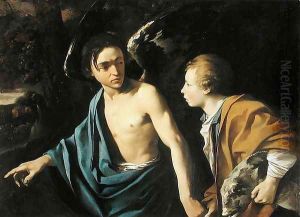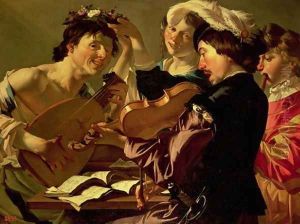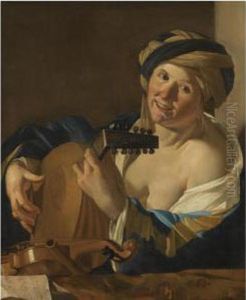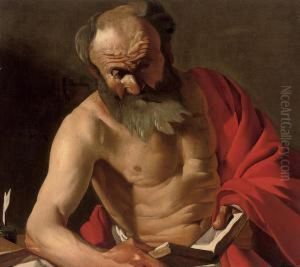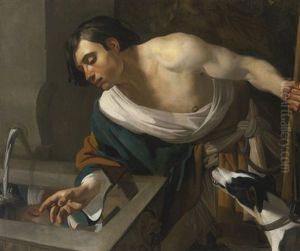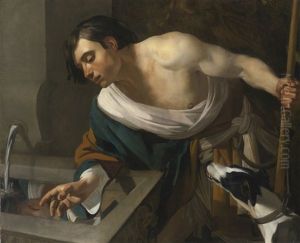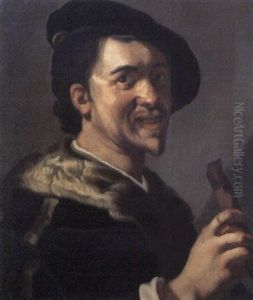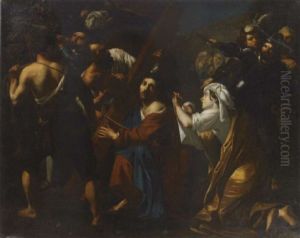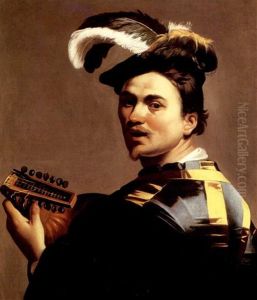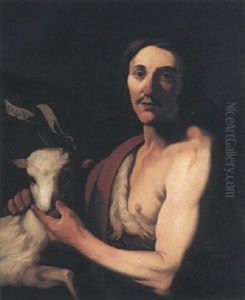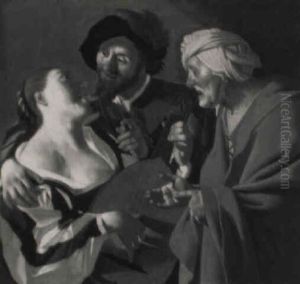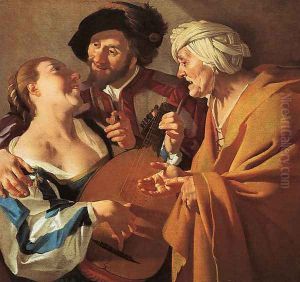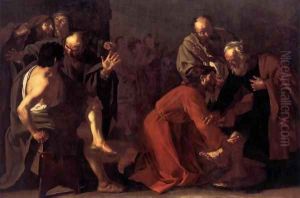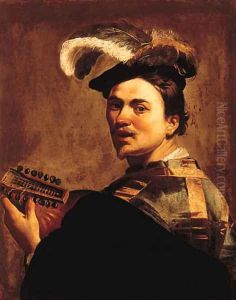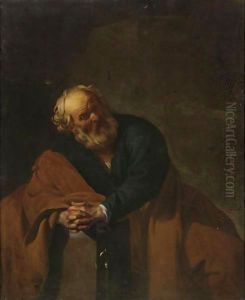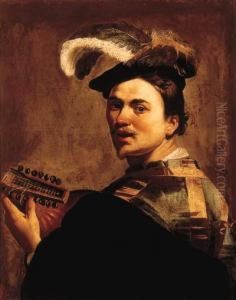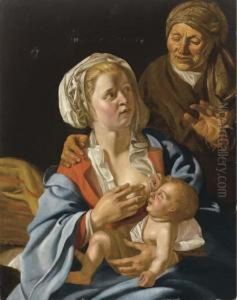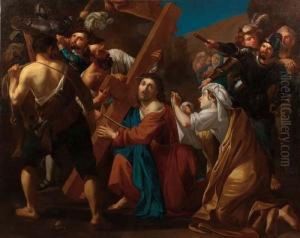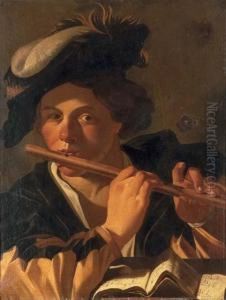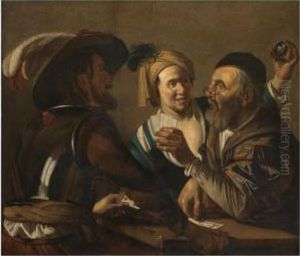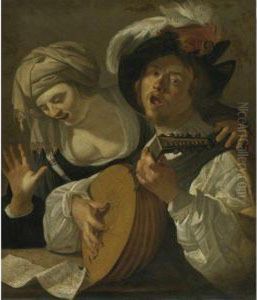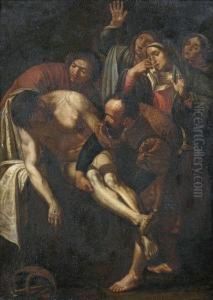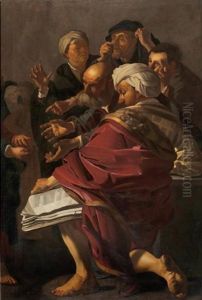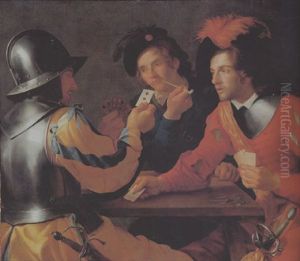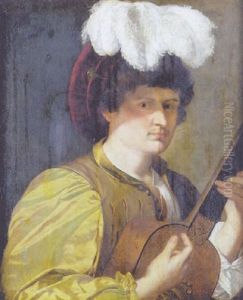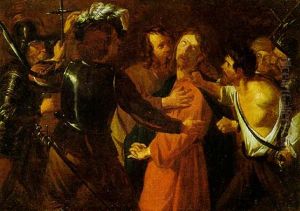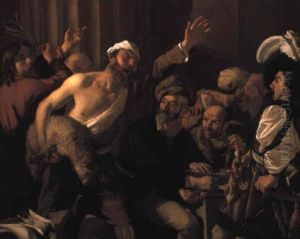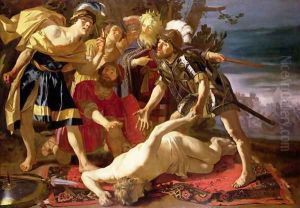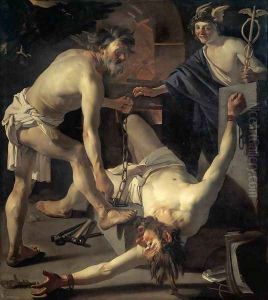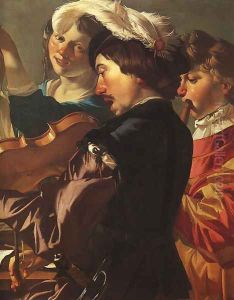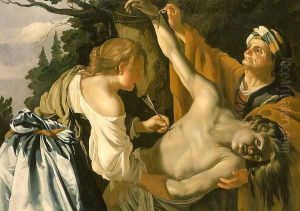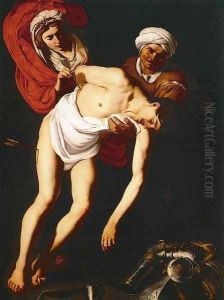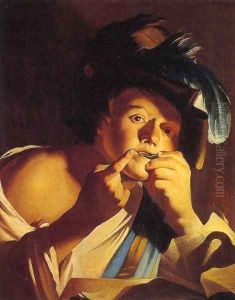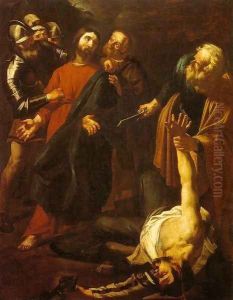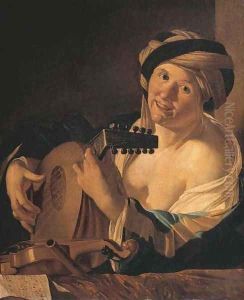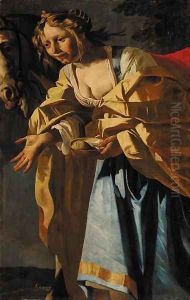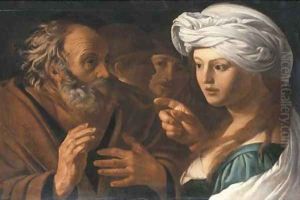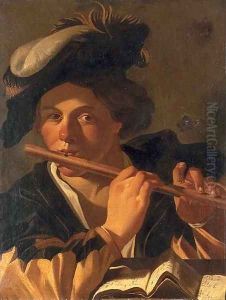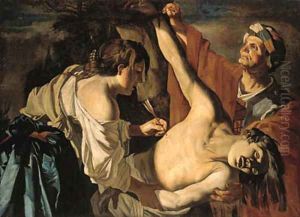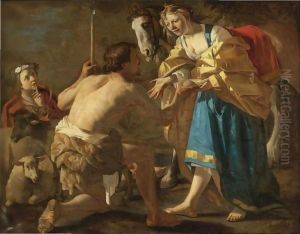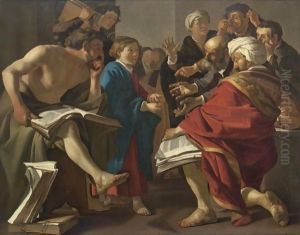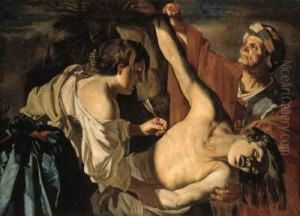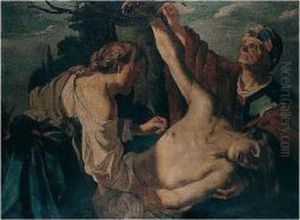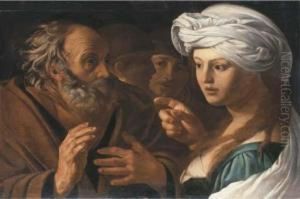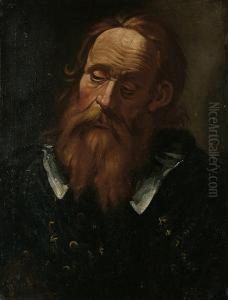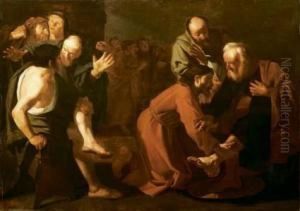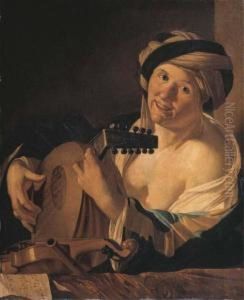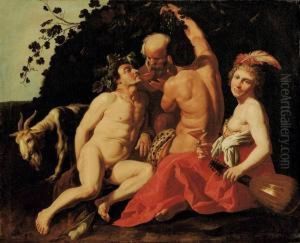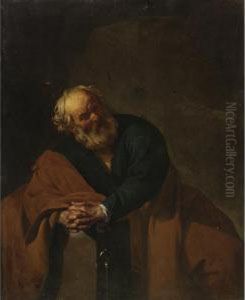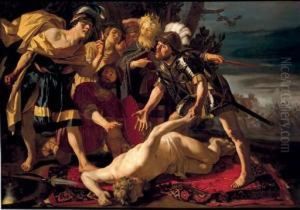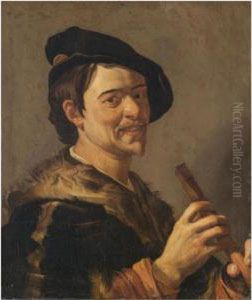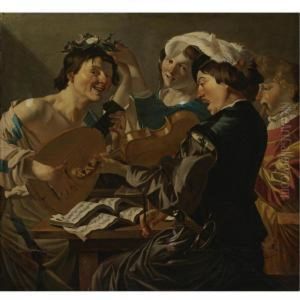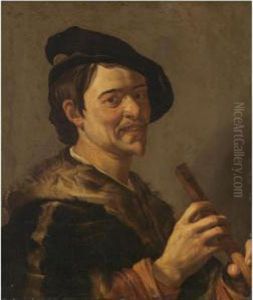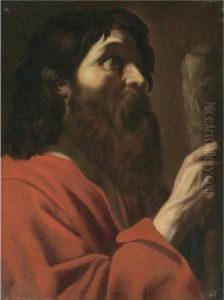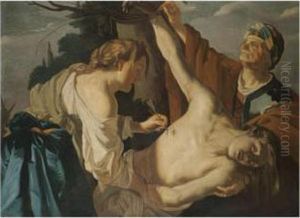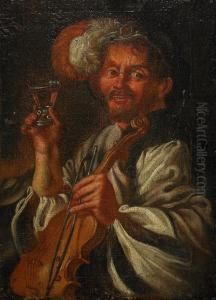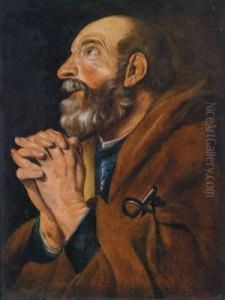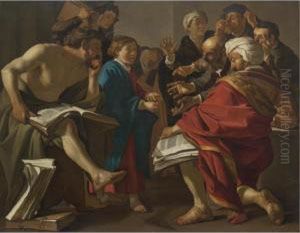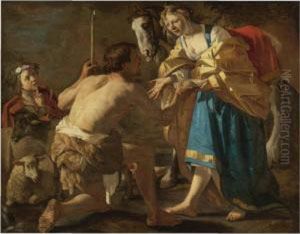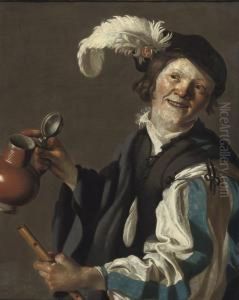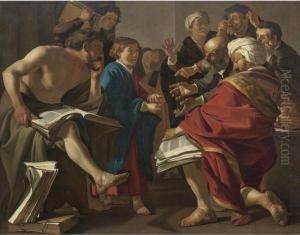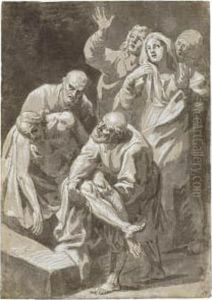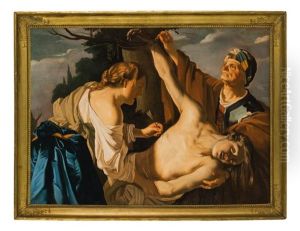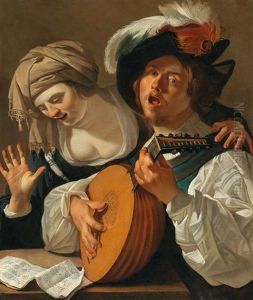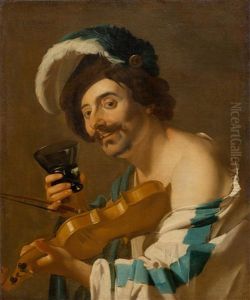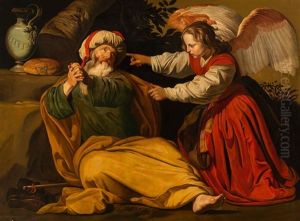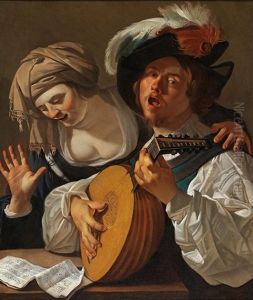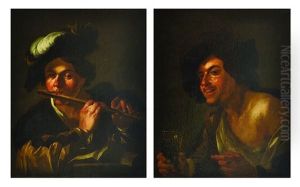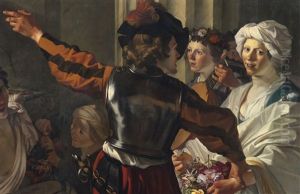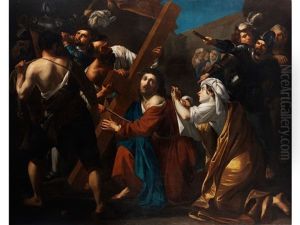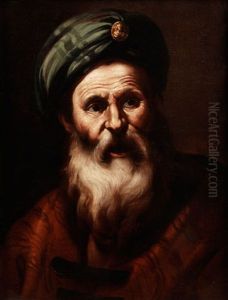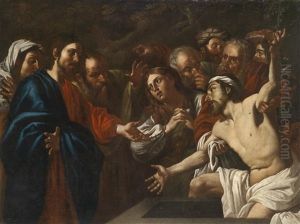Dirck Van Baburen Paintings
Dirck van Baburen was a Dutch painter who was born in approximately 1595 in the town of Wijk bij Duurstede, which is located in the province of Utrecht in the Netherlands. He was known for his contributions to the Utrecht Caravaggism during the Golden Age of Dutch painting. His work is characterized by the use of dramatic lighting and strong chiaroscuro, influenced by the Italian painter Caravaggio, whom he likely encountered during his time in Rome.
Van Baburen's early life is not well-documented, but it is known that he traveled to Rome as a young artist, which was a common practice among Dutch artists of the time who sought to study the works of Italian masters firsthand. In Rome, he became a member of the group of northern artists known as the Bentvueghels, an association of mainly Dutch and Flemish artists working in Rome. It was there that he was exposed to the work of Caravaggio, which had a profound influence on his style. Van Baburen's paintings from this period show a dramatic use of light and shadow, and he often depicted religious subjects, genre scenes, and musicians.
After spending several years in Italy, Van Baburen returned to Utrecht around 1620. Back in the Netherlands, he, along with fellow artists Hendrick ter Brugghen and Gerrit van Honthorst, became leading figures in the introduction and development of Caravaggesque painting in Northern Europe. This group of artists was known for their realistic depictions and dramatic use of light, which was a stark contrast to the more subdued mannerist style that was prevalent in the Netherlands prior to their influence.
Van Baburen's career in Utrecht was productive but brief. He continued to paint in the Caravaggesque style, and his works from this period include 'The Procuress' (1622), which is one of his most famous paintings and exemplifies his mature style. It is believed that this work influenced the young Johannes Vermeer, as a similar subject appears in Vermeer's own work.
Unfortunately, Dirck van Baburen's life was cut short when he died in 1624 at the age of 28 or 29. Despite his early death, his work had a lasting impact on Dutch painting, and his style influenced many Utrecht artists in the decades following his death. Today, his works are held in several prestigious collections, including the Centraal Museum in Utrecht, the Louvre in Paris, and the Hermitage Museum in Saint Petersburg.
